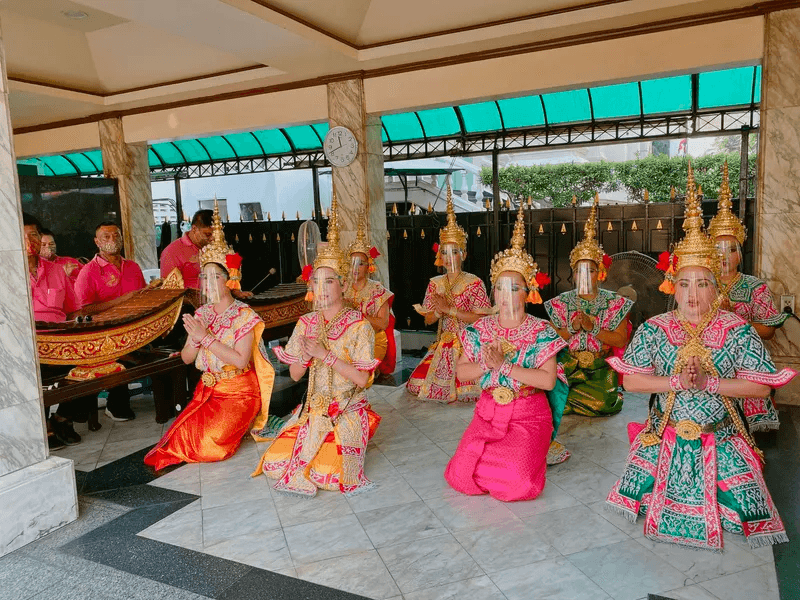Guide to Erawan Shrine
How to pray at the Erawan shrine
Summary
The Erawan Shrine is a Hindu shrine dedicated to the Hindu god Brahma, and is considered one of the most important spiritual and cultural sites in the city. Also commonly known as the Four-Faced Buddha (Phra Phrom), the shrine is located in the middle of several popular shopping centers and is a popular destination for both locals and tourists who come to pray, make offerings, or admire the shrine and traditional dance performances that are held around the shrine.
In addition to the intricate carvings of the shrine and the traditional dance performances, one of the main reasons why the Erawan Shrine is so popular is because of its alleged efficacy in answering prayers and wishes. Stories of the Four-Faced Buddha’s powers have spread very quickly in the last few decades, especially amongst Chinese religious communities, and many tourists travel to Bangkok just to pray to the Four-Faced Buddha. In places like Shanghai, Hong Kong, and Taiwan, replicas of the shrine have also been built by devotees to honour the divine being.

As with most religious places, there are beliefs and practices to adhere to when visiting and praying at the Erawan Shrine. If you are planning to pray for blessings or asking for a wish, read on to find out more about the steps to follow.
Preparation
Praying
The four faces of the Buddha statue symbolize north, south, east and west, signifying that Phra Phrom has unlimited vision of both the human and heavenly worlds. Each face also signifies a particular significance: the front being for career and academics; left for romance and interpersonal relationships; back for wealth; right for health and safety.
“Returning” your wish
The act of “returning” your wish is a form of expressing gratefulness for having your wish fulfilled. How you ‘return’ your wish varies, and is largely dependent on what was promised during your prayer.

If you wished for things from the different faces of the Buddha, the returning of the wish would also have to be done separately.
There are different sayings about what the most auspicious time to visit the shrine is, but what’s most important is to be sincere and respectful. If you are there and are unsure what to do or where to start, approach the staff at the shrine, and they will be more than happy to help!
📍 Address: 494 Ratchadamri Rd, Lumphini, Pathum Wan, Bangkok 10330, Thailand
🚶♂️ Getting there: Take the BTS Sky Train to Chit Lom station and exit from Exit 8. Walk to the shrine about 100 metres away.
🕤 Opening Hours: 6am to 10pm daily
💰 Cost: Admission to the shrine is free
Stay Connected in Bangkok with a Nomad Travel eSIM for Thailand
Stay connected in Bangkok with a Nomad travel eSIM for Thailand. Nomad's eSIMs give you access to affordable data eSIMs in over 170+ destinations worldwide — including Thailand.
Choose from a variety of local, regional, and global data plans, buy and install your eSIM before you fly, and connect to a mobile network within minutes of arrival. Running out of data mid-trip? Simply purchase an add-on in the Nomad app.
Planning a trip to Bangkok? Get a Thailand travel eSIM to stay connected during your trip.